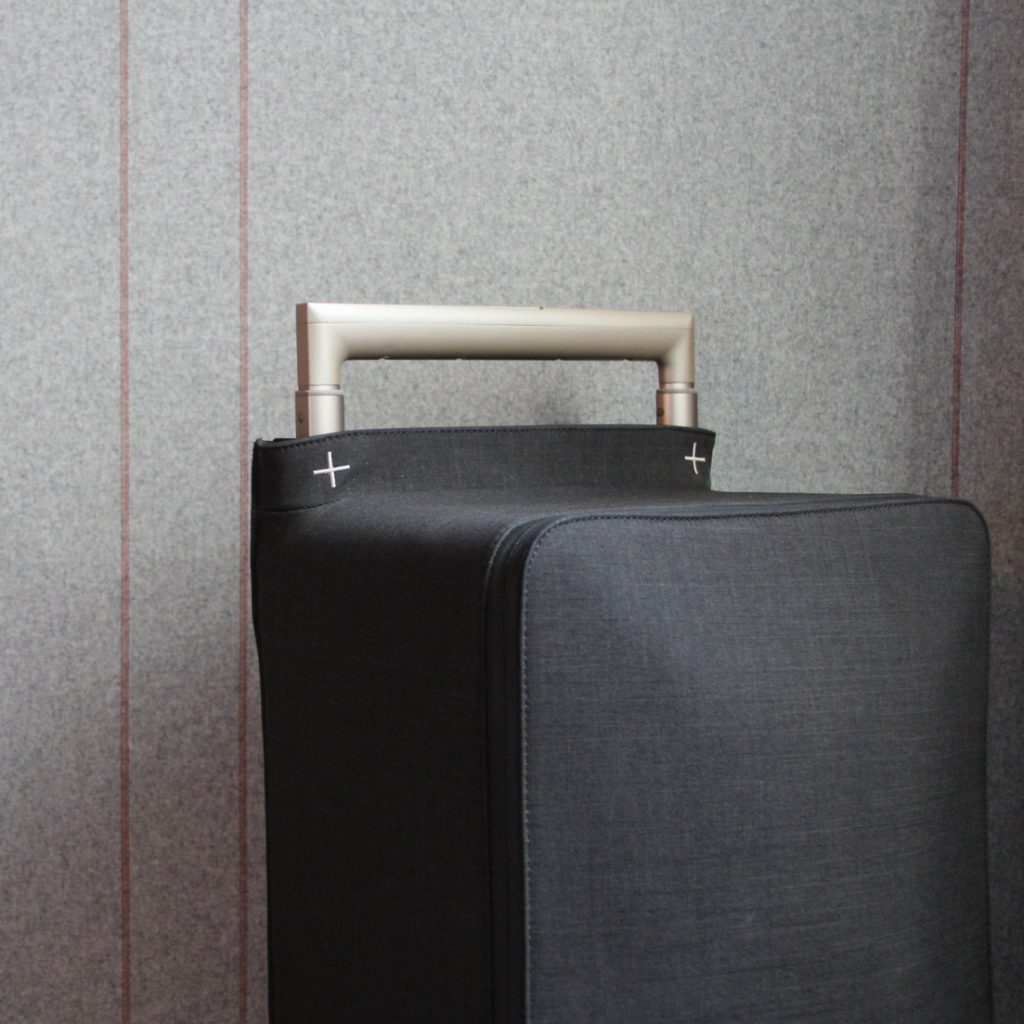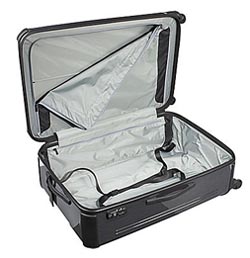G-RO’s Revolutionary Companion Bag
A new way to think about handheld luggage

by Adrienne So
The two-wheeled carry-on is an indispensable piece of luggage for the frequent traveler. But for all its ubiquity, and despite how sleek and modern many of them look, they all have the same weaknesses in functionality. Tiny wheels and awkward weight distribution makes your typical carry-on difficult to maneuver on any surface less smooth than a gleaming airport floor. Business travelers usually have to pack an additional bag, rather than take the risk of colleagues spotting their dirty underwear and extra sweater when they pull out a laptop or portfolio. And now that nearly every traveller carries multiple electronic devices, carry-on bags needed new and inventive ways to store, access and charge them.

G-RO founder Netta Shalgi and co-founder Ken Hertz realized that fiddling with the bag’s window dressing was not going to solve the carry-on’s design flaws. Rather, they needed a radical overhaul. “We looked at long-term plans, not just gimmicks for the next big thing,” Shalgi said in a phone interview with CH. “We came to the conclusion that we have to address the entire concept of traveling bags in a different way.”

The result is a bag that looks—and more importantly, functions—differently from any other. The most obvious difference is the G-RO’s large, axel-less wheels. “We already know that large wheels are more durable and attack the terrain better,” Shalgi said. “If we look at children’s strollers, cars or bikes, we know that every other industry has already understood and adopted the large wheel concept.”

Shalgi’s team developed their own patented wheels out of high-end polymers normally used for firearms and aviation. Mounted on the sides of the bag, the all-terrain wheels take up no additional interior space, strengthen the sides of the bag, and move the bag’s center of gravity closer to the center of the wheels, which makes the bag feel lighter. The second difference is the bag’s internal organization. The bag has a separate compartment for electronics, such as a tablet and laptop, which eliminates the need for a second business bag. A small pocket specifically for carry-on liquids keeps those separated and easy to access during security procedures.

A third difference is the bag’s electronics module, a development which, while not exclusive to the G-RO bag, displays Shalgi’s foresight. “We’re not pioneers on this,” said Shalgi, “but the evolution of batteries is so frequent. If someone won’t need their module, they can buy their bag without it.” The optional electronic module includes a location tracker, a wireless proximity detector, USB ports, and a battery strong enough to charge an iPhone ten times over. The bag also has a built-in stand for tablets and phones. “For each model, we have a charging station on the top panel, close to the carrying handle. There’s a built-in stand to make sure the phone doesn’t fall and break on the floor,” Shalgi said. The module is also removable so that it can be replaced as the technology updates.

And finally, Shalgi’s team went to great lengths to ensure the bag would remain at an affordable price point, sourcing materials, developing a simple assembly process and locating factories that would be able to manufacture their patented bearings for a reasonable cost. “We wanted the bag to be for everyone, for flight attendants, for students,” Shalgi said. “Students tend to live on the cheaper side of the scale.”
We wanted the bag to be for everyone, for flight attendants, for students
All these changes address the needs of a new kind of traveller, a demographic with multiple categories that G-RO discovered was being largely ignored by the bag industry as it stands. The new breed of frequent travelers includes not only women and especially professional women, who, with their different clothes and different packing styles, required more adaptable internal organization, but older travelers who don’t have the physical ability to sling a stylish, waxed-canvas duffel over their shoulders.

G-RO turned to crowdfunding rather than the traditional investment route in order to better gauge market interest. “If [Kickstarter] works, we can invest the money in toolings [for the patented wheel design] and start to make them, instead of the traditional way of putting a lot of money in toolings, make stock, ship stock, pay for storage and agents, and then hope we’ll be able to sell everything,” Shalgi said.

The bag will be available in two different colorways for pre-purchase on Kickstarter, starting as low as $199, with an eventual expected retail price of $499. For more information, keep an eye on G-RO.com.
Images courtesy of Shalgi Design Studio












